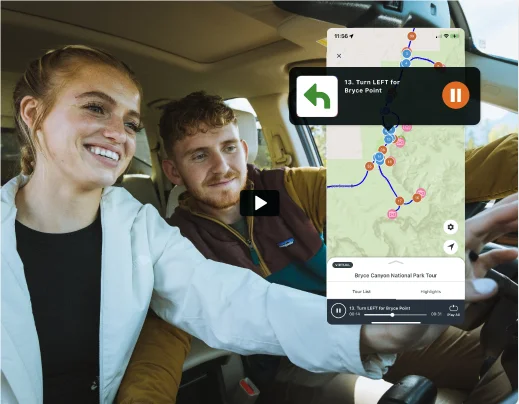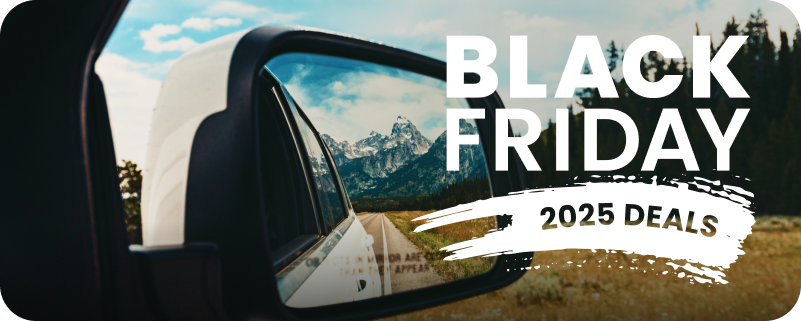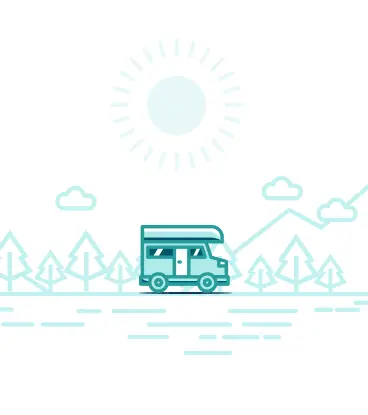Like a trusty car and a full tank of gas, these cookies keep everything running smoothly. They power core features like secure login, navigation, and yo

 Top Rated:
Top Rated:
Yellowstone National Park Tour
Yellowstone National Park Tour
About The Tour
Experience the ultimate Yellowstone Tour with Shaka Guide - a comprehensive, fun, and informative journey that brings you all the best that Yellowstone has to offer. Unlike with other Yellowstone tours, with Shaka Guide, you have the freedom to choose your direction and decide how much you'd like to explore on any given day. Best of all, as you travel through the park, we'll share with you our favorite stops, stories, and music, all of which have been hand-selected, personally researched, and expertly produced.
Here are just a few of the fun things you can do on the Yellowstone National Park tour:
• Check out the park's hundreds of geothermal features like geysers and hot springs.
• Spot unique wildlife such as bison, pronghorn, elk, and gray wolves.
• Marvel at scenic views like The Grand Canyon of the Yellowstone
Pro tip! Bundle this tour with our Grand Teton National Park Tour!
Sample Tour Audio
Tour Stops
Tour Route
Purchase Bundle & Save
Yellowstone & Grand Teton Bundle
$23.99 $33.98 29% off
-
Yellowstone National Park Tour
-
Grand Teton National Park Tour
The Ultimate National Park Tour Collection
$99.99 $847.46 88% off
-
Hawaii Volcanoes National Park Tour
-
Sunrise at Haleakala National Park Tour
-
Sunset and Stargazing Haleakala Tour
-
Arches National Park Tour
-
Zion National Park Tour
-
Capitol Reef National Park Tour
-
Bryce Canyon National Park Tour
-
Canyonlands National Park Tour
-
Grand Canyon South Rim Tour
-
Petrified Forest National Park Tour
-
Saguaro National Park Tour
-
Grand Canyon North Rim Tour
-
Rocky Mountain National Park Tour
-
Joshua Tree National Park Tour
-
Yellowstone National Park Tour
-
Yosemite National Park Tour
-
Grand Teton National Park Tour
-
Death Valley National Park Tour
-
Mount Rainier National Park Tour
-
Shenandoah National Park Tour
-
Great Smoky Mountains National Park Tour
-
Cuyahoga Valley National Park Tour
-
New River Gorge National Park Tour
-
Redwood National Park Tour
-
Sequoia National Park Tour
-
Kings Canyon National Park Tour
-
Big Bend National Park Tour
-
Everglades National Park Tour
-
White Sands National Park Tour
-
Indiana Dunes National Park Tour
-
Olympic National Park Tour
-
Crater Lake National Park Tour
-
Acadia National Park Tour
-
Lassen Volcanic National Park Tour
-
North Cascades National Park Tour
-
Badlands National Park Tour
-
Theodore Roosevelt National Park Tour
-
Mesa Verde National Park Tour
-
Glacier National Park Tour: Going-to-the-Sun Road
-
Great Basin National Park
-
Hot Springs National Park
-
Glacier National Park Tour: Many Glacier
-
Glacier National Park Tour: Two Medicine
-
Gateway Arch National Park
-
Glacier National Park Tour: North Fork
-
Guadalupe Mountains National Park
-
Carlsbad Caverns National Park
-
Biscayne National Park Tour
-
Wind Cave National Park Tour
-
Great Sand Dunes National Park Tour
-
Black Canyon of the Gunnison Tour
-
Reverse Arches National Park Tour
-
Dry Tortugas National Park Tour
-
Congaree National Park Walking Tour
3 Steps to Buy & Redeem:
Add to Cart & Checkout
Create Account during checkout
Download App & Login
Reviews
Where is Yellowstone National Park?
Yellowstone National Park is located primarily in the western United States, spanning parts of three states: Wyoming, Montana, and Idaho. Its vast and diverse landscapes encompass geothermal wonders, towering mountains, lush forests, serene la...
How big is Yellowstone National Park?
Yellowstone National Park covers an expansive area of approximately 2.2 million acres. Its immense size makes it one of the largest national parks in the United States and allows for a rich variety of ecosystems, including geothermal geysers, ...
When was Yellowstone National Park established?
Yellowstone National Park was established on March 1, 1872, making it the world's first national park. The park's creation marked a pivotal moment in conservation history, as it set a precedent for preserving natural landscapes and protecting ...
What is an Audio Tour Guide?
Think of us as your personal tour guide in an app. Our tours provide everything a guided tour does, but with the freedom to explore on your terms. Here’s how it works:
- GPS triggers audio narration to play automatically as you drive or walk.
- Listen to stories, get local insights, visit must-see stops and get turn-by-turn navigation.

Tour FAQs
With 110 stops, this tour is massive. There’s so much to see and do in Yellowstone, it would be impossible to get to everything in one day. This tour is designed in segments and you can take the segments as you please. No matter where you start or which direction you go in, the tour will play automatically. Check out our suggested itinerary here. This itinerary is broken up into regions of the park. If you’re looking for more information to help plan your trip, here’s what you need to know before you go!
- Phone
- Car charger - *very important*
- Sturdy sneakers or hiking boots
- Rain jacket or poncho (layers for varying weather conditions)
- Refillable water bottle
- Bug Spray
- Sunscreen
- Sun Glasses and/or Hat
- Snacks
- Bear spray: Carrying bear spray can provide an extra layer of protection in the event of a bear encounter.
- Picnic lunches: While there are some restaurants in the park, they are usually pricey and crowded.
Of course a lot of the costs will depend on what you choose to do, what you want to eat, and so on. But here are our estimates to help you plan:
- $35 per car: Yellowstone National Park Entrance Fee
- $10-20 per person: Food and snacks in the park
Below are hours of operations for some of the major stops on the Yellowstone National Park Tour.
- Entrances: Yellowstone National Park has five entrance gates: north, northeast, east, south, and west. They are typically open 24 hours a day, 365 days a year. However, weather-related road closures may affect access through specific gates on occasion.
- Visitor Centers: Yellowstone National Park has several visitor centers with informative exhibits. The hours of operation vary depending on the season, but they are generally open from 9 a.m. to 5 p.m.
- Ranger Stations: Ranger stations are located in different areas of the park and provide assistance and ranger-led programs. Their hours align with those of the visitor centers, so you can plan accordingly.
- Services and Facilities: Yellowstone has several facilities like lodges, restaurants, gift shops, gas stations, and grocery stores. Operating hours vary, especially during shoulder seasons or winter months when some services may be limited. Generally, expect hours around 9-5, although some locations may open later or close earlier.
Please keep in mind that hours of operation can change due to weather, road conditions, or other factors.
Yes! Feel free to join the tour along the route. Just make sure that you follow the numbers in chronological order. The tour is designed to be relevant to your location, so you can join at any spot and the map and start enjoying the tour. If you want the complete experience, it’s best to begin from a start point so you don’t miss any great stories or info about the park.
Yes, this tour is divided into seven segments, regardless of the direction you're traveling in, or the starting point you began at, the tour will work.
Still have questions? Send us an email at aloha@shakaguide.com or give us a call at (808) 201-8138.
Nearby Tours
Yellowstone National Park Tour
Yellowstone & Grand Teton Bundle
$23.99
-
Yellowstone National Park Tour
-
Grand Teton National Park Tour
The Ultimate National Park Tour Collection
$99.99
-
Hawaii Volcanoes National Park Tour
-
Sunrise at Haleakala National Park Tour
-
Sunset and Stargazing Haleakala Tour
-
Arches National Park Tour
-
Zion National Park Tour
-
Capitol Reef National Park Tour
-
Bryce Canyon National Park Tour
-
Canyonlands National Park Tour
-
Grand Canyon South Rim Tour
-
Petrified Forest National Park Tour
-
Saguaro National Park Tour
-
Grand Canyon North Rim Tour
-
Rocky Mountain National Park Tour
-
Joshua Tree National Park Tour
-
Yellowstone National Park Tour
-
Yosemite National Park Tour
-
Grand Teton National Park Tour
-
Death Valley National Park Tour
-
Mount Rainier National Park Tour
-
Shenandoah National Park Tour
-
Great Smoky Mountains National Park Tour
-
Cuyahoga Valley National Park Tour
-
New River Gorge National Park Tour
-
Redwood National Park Tour
-
Sequoia National Park Tour
-
Kings Canyon National Park Tour
-
Big Bend National Park Tour
-
Everglades National Park Tour
-
White Sands National Park Tour
-
Indiana Dunes National Park Tour
-
Olympic National Park Tour
-
Crater Lake National Park Tour
-
Acadia National Park Tour
-
Lassen Volcanic National Park Tour
-
North Cascades National Park Tour
-
Badlands National Park Tour
-
Theodore Roosevelt National Park Tour
-
Mesa Verde National Park Tour
-
Glacier National Park Tour: Going-to-the-Sun Road
-
Great Basin National Park
-
Hot Springs National Park
-
Glacier National Park Tour: Many Glacier
-
Glacier National Park Tour: Two Medicine
-
Gateway Arch National Park
-
Glacier National Park Tour: North Fork
-
Guadalupe Mountains National Park
-
Carlsbad Caverns National Park
-
Biscayne National Park Tour
-
Wind Cave National Park Tour
-
Great Sand Dunes National Park Tour
-
Black Canyon of the Gunnison Tour
-
Reverse Arches National Park Tour
-
Dry Tortugas National Park Tour
-
Congaree National Park Walking Tour
3 Steps to Buy & Redeem:
Add to Cart & Checkout
Create Account during checkout
Download App & Login
Join the Ride!
Our next stop - your inbox! Subscribe to our email list for travel tips, inspiration, special offers, and more!








 Wyoming
Wyoming





























































 to fuel your ride
to fuel your ride 
